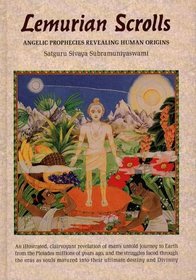Search -
Lemurian Scrolls: Angelic Prophecies Revealing Human Origins
Lemurian Scrolls Angelic Prophecies Revealing Human Origins
Author:
The Lemurian Shastras, which make up the first half of these scrolls, unfold a remarkable story of how souls journeyed to Earth in their subtle bodies some four million years ago. The narrators of the ancient texts explain that civilization on their native planets had reached a point of such peacefulness that spiritual evolution had come to a st... more »
Author:
The Lemurian Shastras, which make up the first half of these scrolls, unfold a remarkable story of how souls journeyed to Earth in their subtle bodies some four million years ago. The narrators of the ancient texts explain that civilization on their native planets had reached a point of such peacefulness that spiritual evolution had come to a st... more »
ISBN-13: 9780945497707
ISBN-10: 0945497709
Publication Date: 10/1998
Pages: 396
Rating: ?
ISBN-10: 0945497709
Publication Date: 10/1998
Pages: 396
Rating: ?
0 stars, based on 0 rating
Publisher: Himalayan Academy Publications
Book Type: Hardcover
Members Wishing: 0
Reviews: Amazon | Write a Review
Book Type: Hardcover
Members Wishing: 0
Reviews: Amazon | Write a Review
Genres:
- Literature & Fiction >> World Literature >> Mythology >> General
- Literature & Fiction >> World Literature >> Mythology >> Indian
- Religion & Spirituality >> New Age & Spirituality >> General
- Religion & Spirituality >> Occult & Paranormal >> Unexplained Mysteries
- Religion & Spirituality >> Occult & Paranormal >> Ancient & Controversial Knowledge




